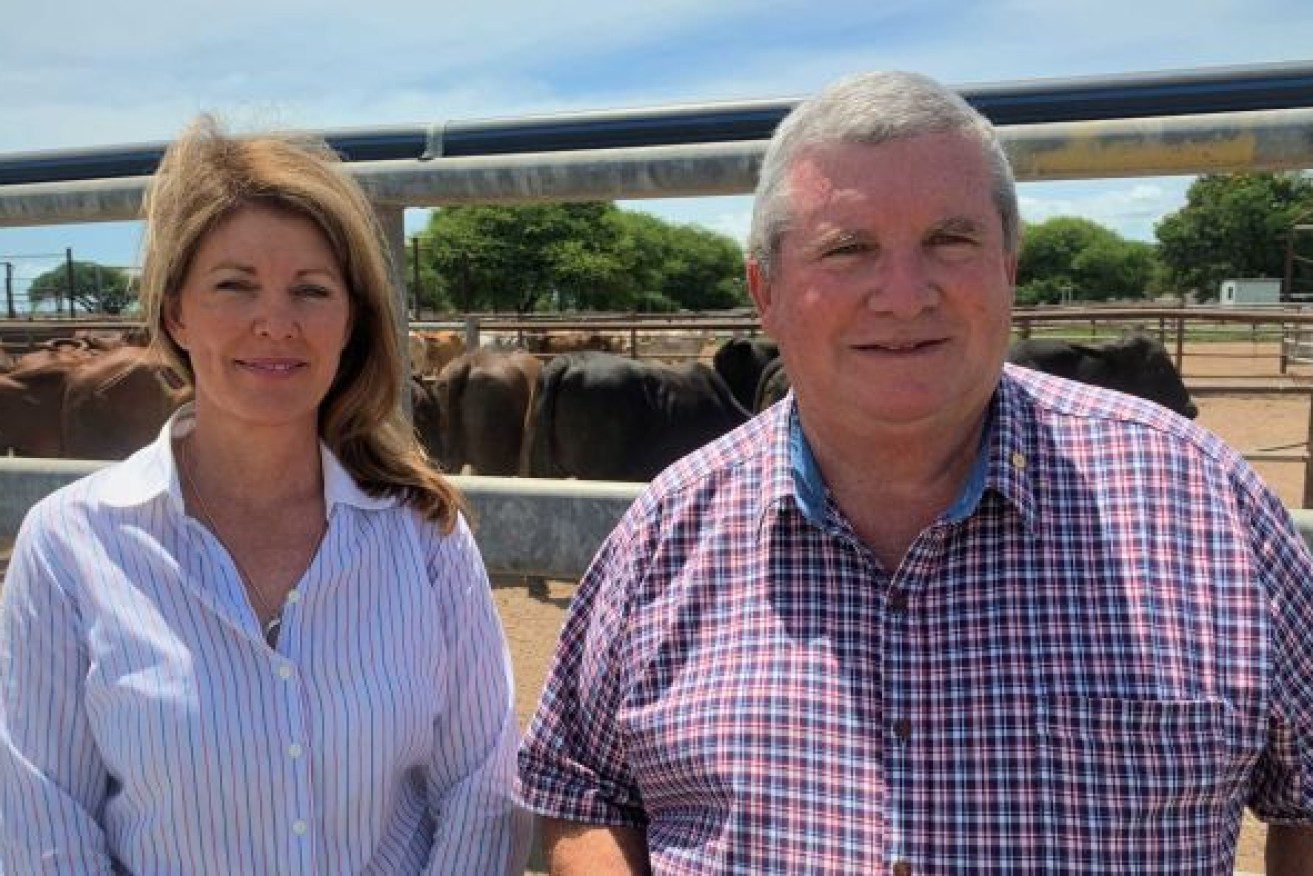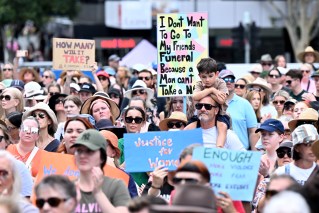Millions in Queensland farmers’ flood recovery grants go unclaimed
Only $66 million of the Federal Government’s $300 million grant assistance scheme to rebuild after the worst floods in a generation has been claimed by North Queensland farmers.

Agency coordinator-general Shane Stone, pictured with fellow National Drought and Flood Agency board member Tracey Hayes, said he was surprised at the limited take up of the grants. Photo: ABC
Monsoonal flooding in February 2019 dumped two years worth of rain in just days on properties from Cloncurry to the coastal Burdekin region, causing up to $2 billion in losses.
Despite the Commonwealth establishing the North Queensland Livestock Industry Recovery Agency and appointing former Northern Territory chief minister Shane Stone as coordinator, just over 13 per cent of the recovery funding has been spent.
“They have not been embraced as enthusiastically as we expected,” Stone said.
“There’s real problems associated with the dollar-for-dollar proposition. People say ‘well we just don’t have the money to match the money’.”
It is estimated about 850 sheep and cattle properties are eligible to apply for the money.
Grants of up to $400,000 in co-funding for re-stocking and damage repairs have been offered.
“It is disappointing the take up has been so poor,” Stone said.
While some farmers have struggled to restock due to record high cattle prices and limited funds, Stone said cultural opposition to government “handouts” could also be at play.
“I keep making the point it’s not a handout, it’s a hand-up, it’s intended to get you back in business because that’s in the national interest,” he said.
‘Very tough decision’
Matt and Sonia Bennetto sold their property at Isabel Downs, near Julia Creek, after the floods which claimed about 70 per cent of their 1500 cattle.
“It was a certainly a massive trajectory changing loss,” Bennetto said.
“We went from being small-time primary producers to having only a handful of cattle. It was a big change.”
He said the family had not been looking to sell but decided it was the best option when they received offers.
“It was a very, very tough decision.”
Bennetto, who has a property at Virginia Park near Charters Towers, has moved into the building industry after initially setting up a demolition and tiling business to assist with Townsville’s busy flood recovery.
“We started doing insurance work after the floods,” he said.
“People’s houses were devastated. We did demolition work, then moved to tiling, now we own half of a construction company.”
In his role as president of AgForce North, Bennetto said he was surprised only a fraction of the restocking grant funds had been claimed, but emphasised drought was still a concern for the region.
Most areas that experienced the flooding quickly returned to drought conditions.
“Many haven’t been in a position to run more cattle,” he said.
“I know there’s a lot of support in filling out paperwork, the Government has made every effort to help people.”
AACo chief executive Hugh Killen said a lack of rain had affected the restocking program the company had budgeted for following the flood.
It has already spent $8 million on fencing, machinery and infrastructure.
“It has been a long recovery,” Killen said.
“This time last year we had a very poor wet season, we’re having some OK rain on the Gulf region now though.”
AACo did not apply for any government assistance for buying cattle following the floods, and Killen said stocking rates were still relatively low.
“Like anyone else in the cattle industry, we’ll be going through a herd rebuild phase. We’re looking forward to a season to build our cattle into,” he said.
Bennetto said potential alternatives for the balance of the restocking grant money had also crossed his mind if a majority remained unclaimed.
“I hope the money is taken up but there’s opportunity to use it for investment in dams, cropping, improving soils and helping store more carbon,” he said.
While it has been hard for producers, Bennetto said high cattle prices was creating some optimism about the present season.
“I don’t want to sound all negative, with prices at the moment and people who have dug deep to hang in there, there’s some hopefully exciting times ahead,” he said.
Phone tower saves lives
As well grants for producers, there was a separate fund of $58 million for community recovery allocated in the 2020 Federal Budget for the region.
Stone said local input was needed to funnel money to projects.
He said some recovery and resilience grants had been spent on telecommunications in the region, and there were allocations for mental health, economic diversification and telecommunications.
“I thought one standout [grant expenditure] was on the Leichhardt River up near Burketown, where one grazier went 50/50 with Telstra to build a mobile phone tower.
“That actually saved lives this wet season.
“It was a cause of death two years ago when people got caught trying to cross the flooded river and couldn’t ring for help.
“This year people were able to call the grazier for immediate assistance.”
The grants have been extended until June 30, 2022.
– ABC / Tom Major












